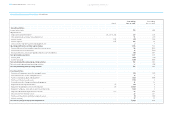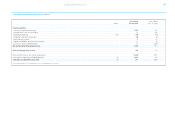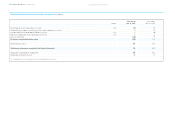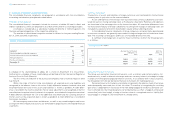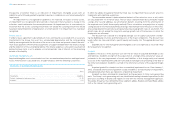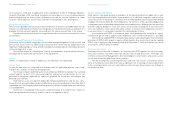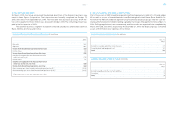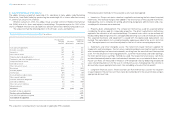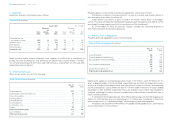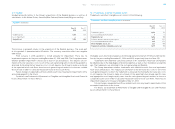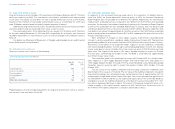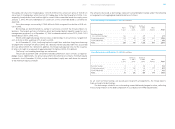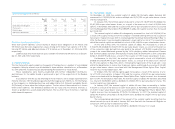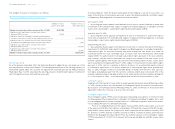Reebok 2006 Annual Report Download - page 160
Download and view the complete annual report
Please find page 160 of the 2006 Reebok annual report below. You can navigate through the pages in the report by either clicking on the pages listed below, or by using the keyword search tool below to find specific information within the annual report.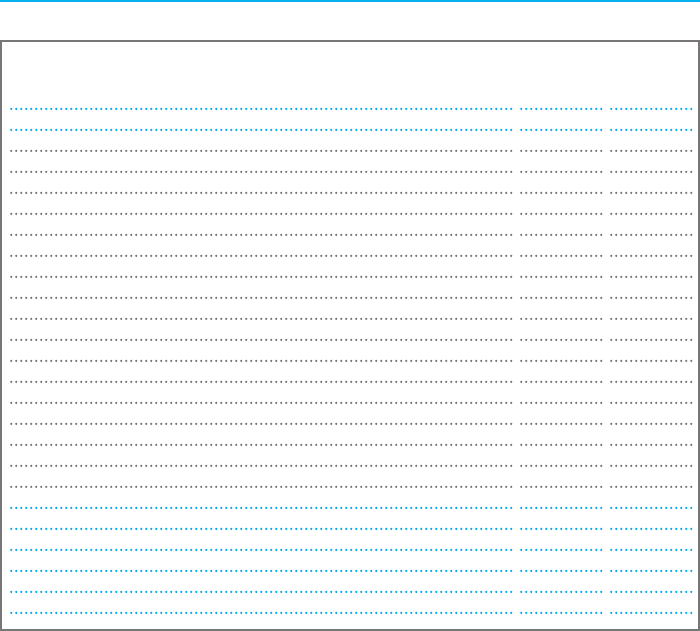
Consolidated Financial Statements ›
156 ANNUAL REPORT 2006 › adidas Group ›
5 » Acquisition/Disposal of Subsidiaries
The adidas Group assumed full ownership of its subsidiary in India, adidas India Marketing
Private Ltd., New Delhi (India), by purchasing the remaining 8.6% of shares effective January
17, 2006 for an amount of € 2 million.
Effective January 31, 2006, the adidas Group assumed control of Reebok International
Ltd. (USA), with all its direct and indirect shareholdings. The purchase price for 100% of the
shares of Reebok International Ltd. (USA) was US $ 3.6 billion (€ 3.0 billion), fully paid in cash.
The acquisition had the following effect on the Group’s assets and liabilities:
Pre-acquisition carrying amounts were based on applicable IFRS standards.
Following valuation methods for the acquired assets have been applied:
» Inventories: The pro rata basis valuation is applied for estimating the fair value of acquired
inventories. The realized margins were added to the book values of the acquired inventories.
Subsequently, cost to complete for selling, advertising and general administration and a rea-
sonable profit allowance were deducted.
» Property, plant and equipment: The comparison method was used for acquired land by
considering the prices paid for comparable properties. The direct capitalization method was
applied for the valuation of all acquired buildings. The annual rents which can be realized will
be adjusted by deducting risk factors and applicable operating costs and are finally discounted.
The acquired machinery and equipment is valued with the depreciated replacement cost
method. The replacement costs are determined by applying an index to the asset’s historical
cost. The replacement costs are then adjusted for the loss in value caused by depreciation.
» Trademarks and other intangible assets: The relief-from-royalty method is applied for
trademarks and technologies. The fair value is determined by discounting the royalty savings
after tax and adding a tax amortization benefit, resulting from the amortization of the acquired
asset. For the valuation of licensing agreements, customer relationships and order backlogs,
the multi-period-excess-earnings method was used. The respective future excess cash flows
are identified and adjusted in order to eliminate all elements not associated with these assets.
Future cash flows are measured on the basis of the expected sales by deducting variable and
sales-related imputed costs for the use of contributory assets. Subsequently, the outcome is
discounted using an appropriate discount rate and adding a tax amortization benefit.
» Long-term financial assets: The discounted cash flow method was used for the valuation
of a participation. Future free cash flows were discounted back to the valuation date using an
appropriate discount rate.
Reebok’s Net Assets at the Acquisition Date € in millions
Pre-aquisition Recognized
carrying Fair value values on
amounts adjustments acquisition
Cash and cash equivalents 539 — 539
Accounts receivable 453 — 453
Inventories 447 55 502
Other current assets 103 (3) 100
Property, plant and equipment, net 293 (33) 260
Trademarks and other intangible assets, net 68 1,674 1,742
Long-term financial assets — 4 4
Deferred tax assets 198 44 242
Other non-current assets 16 — 16
Borrowings (506) — (506)
Accounts payable (109) — (109)
Income taxes (59) — (59)
Accrued liabilities and provisions (329) (30) (359)
Other current liabilities (418) — (418)
Pensions and similar obligations (7) — (7)
Deferred tax liabilities (11) (578) (589)
Other non-current liabilities (2) — (2)
Minority interests (3) — (3)
Net assets 673 1,133 1,806
Goodwill arising on acquisition 1,165
Purchase price settled in cash 2,971
Cash and cash equivalents acquired 539
Cash outflow on acquisition 2,432


